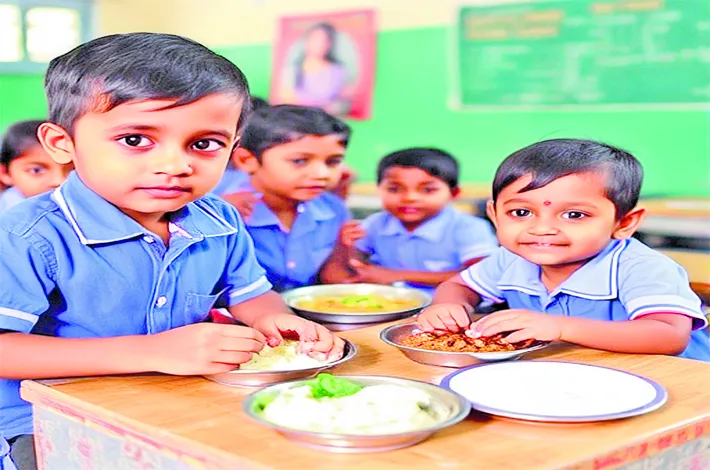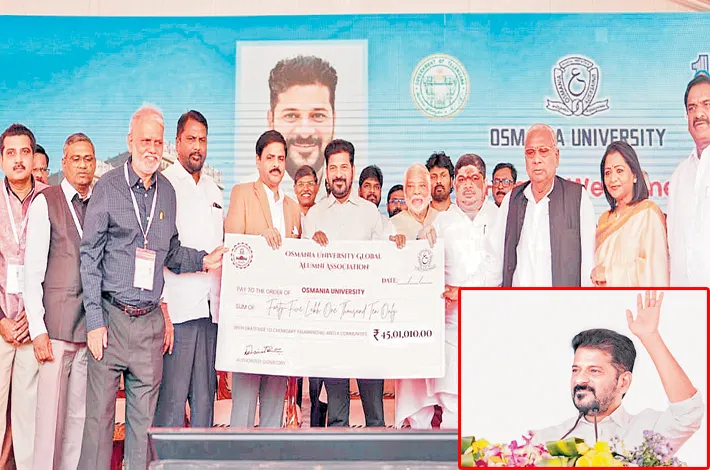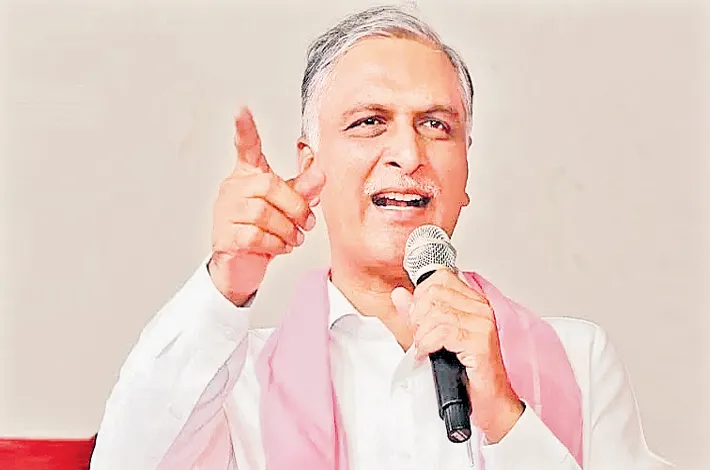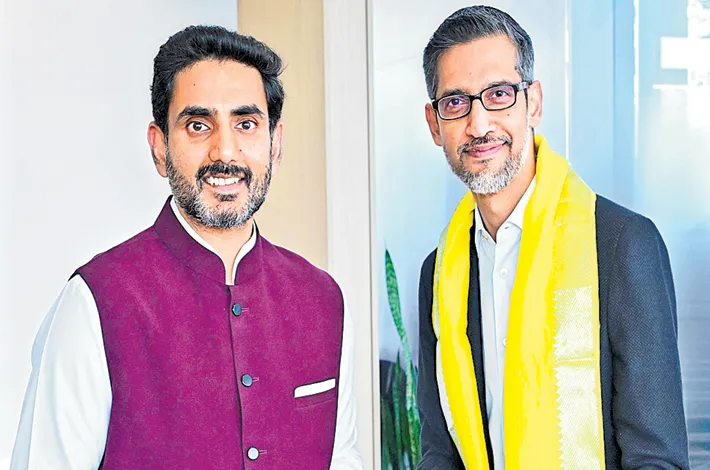Classroom hunger vs. Budget crunch: Is Rs 6 Enough ?
07-01-2025 12:00:00 AM

* Rs 6.19 for primary and Rs 9.29 for upper primary students—barely enough in today’s economy
* Comparisons reveal disparity: A roadside tea costs Rs 10–15, while school meals are expected to meet nutritional standards on a fraction of that.
* Watery dishes and minimal portions deter with 1 in 4 students preferring home-packed food instead of Mid-day Meal
mahesh avadhutha I hyderabad
The Mid-Day Meal (MDM) Scheme, a flagship program of the Government of India, aims to nourish young minds and stomachs. It ensures free, nutritious meals to school children in government and aided schools in Telangana and other states, striving to combat classroom hunger, malnutrition, and dropout rates while empowering women as cooks and helpers. However, the program’s lofty ideals seem at odds with its budgetary constraints, exposing a glaring gap between intent and implementation.
Consider this: The Centre recently revised the per-child material cost under PM POSHAN (Pradhan Mantri Poshan Shakti Nirman) to Rs 6.19 for classes 1–5 and Rs 9.29 for classes 6–8. At first glance, these increases might seem encouraging.
But compare this to everyday expenses—a roadside cup of tea costs Rs 10–15, and a basic breakfast at a Tiffin center starts at Rs 30 per plate. In this context, the allocated amount for a child’s meal feels woefully inadequate.
The reality is stark: with skyrocketing grocery prices, stretching Rs 6–Rs 9 to provide a wholesome, balanced meal is near impossible. As a result, sambar becomes watery, vegetables sparse, and the overall quality subpar in meals served to students in government schools. The disparity in funding contributes to declining participation, with one in four government school students skipping the mid-day meal in favor of packed lunches from home.
Telangana, to its credit, has extended the scheme to students of classes 9 and 10 at its own expense, recognizing the program's potential to bridge nutritional gaps. However, without significant budget enhancements, even this progressive step faces challenges.
In an era where basic sustenance costs are spiraling, it’s time to question whether the MDM scheme’s budget truly reflects its noble aspirations. Policymakers must act to align funding with market realities, ensuring every child gets the meal they deserve—not just in quantity but in quality. After all, an investment in nutrition is an investment in the nation’s future.
Gurukuls Fine, but what about Day Schools?
The Congress-led Telangana government recently earned accolades for significantly increasing diet charges for students in state-run residential and Gurukul welfare schools. The hike, ranging from 40% to 60%, aims to improve the quality and nutrition of meals served in welfare hostels, especially in the wake of food poisoning incidents.
Diet fees were raised from Rs 950 to Rs 1,330 for classes 3–7, Rs 1,100 to Rs 1,540 for classes 8–10, and Rs 1,500 to Rs 2,100 for Intermediate to PG levels. While this initiative was well-received, questions remain about the state’s 26,000-odd government day schools, which rely on the Mid-Day Meal (MDM) scheme.
State can take a call irrespective of Centre’s rates
The MDM scheme operates under a shared funding model, with the Centre contributing Rs 240 crore and the state Rs 140 crore if the 2024–25 budget estimates are taken into consideration. However, Mallikarjun Sharma, former President of the Telangana Headmasters Association, argued that Telangana should independently increase material costs for meals served in government day schools, following the Congress government's example with welfare schools.
Highlighting the administration’s Rs 500-per-quintal bonus for fine-quality paddy to motivate farmers, Sharma emphasized that similar support to government schools could ensure higher-quality food for students.
Sharma also proposed doubling the honorarium for women helpers from SHG groups, suggesting a raise from the current levels to Rs 5,000–Rs 10,000 per agency. This would not only improve service quality but also empower women economically.
The Telangana Education Commission is reportedly set to recommend a 30% hike in material costs per child for improving the quality of Mid-day meals in government schools. This increase could align day schools with the improvements seen in welfare schools, ensuring that all children benefit from better meals.








